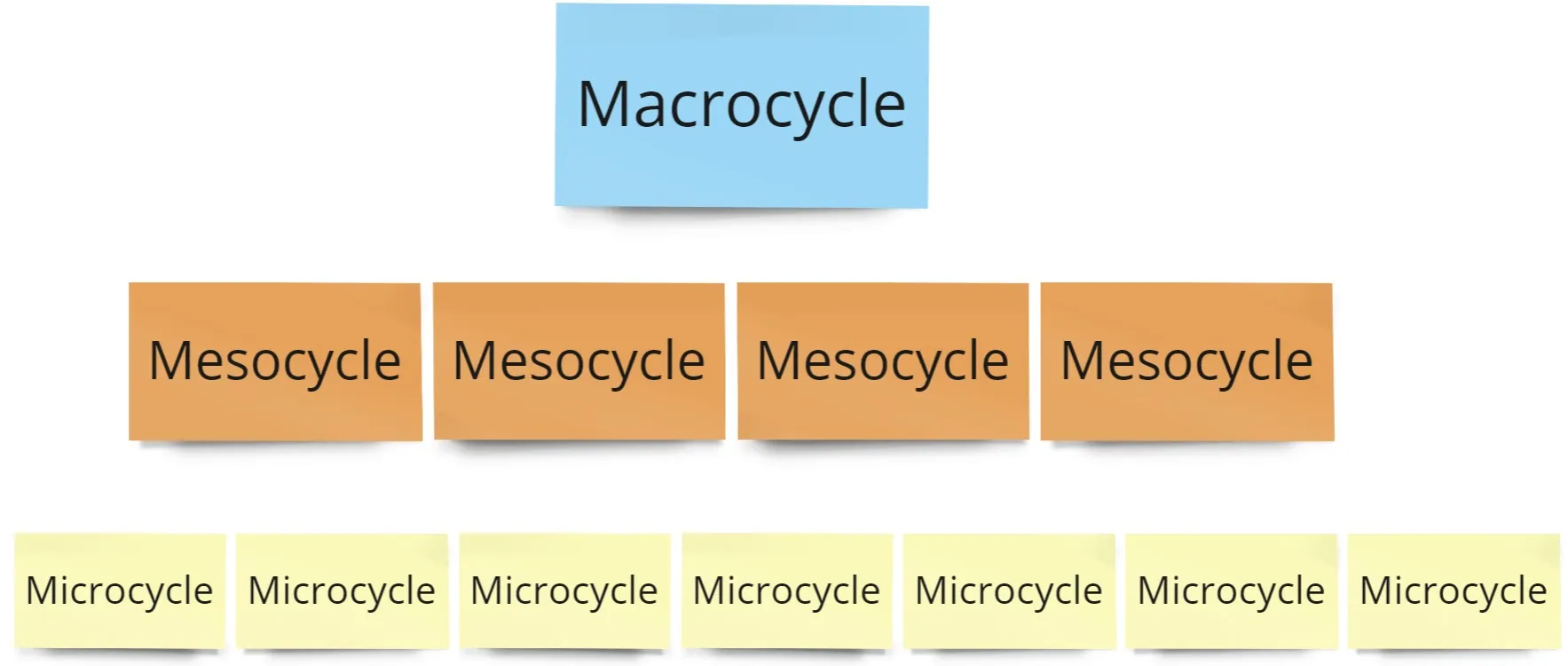
The journey to becoming an efficient runner is more than just logging miles; it’s about structuring your workouts strategically to achieve optimum performance and prevent injuries. One popular way of organizing running training is through periodization, a concept that breaks training down into different periods: macro, meso, and micro cycles. This article will provide a detailed guide on how to design a running plan using these cycles.
Understanding the Cycles
Before we dive into crafting a running plan, it’s vital to understand what macro, meso, and micro cycles are:
- Macro Cycle: This is the overarching, long-term plan that usually spans one year but can be up to four years for athletes planning for the Olympics. The macro cycle contains the entire training regimen, goals, and race plans.
- Meso Cycle: A meso cycle represents a specific phase within the macro cycle. Depending on the runner’s goals and timeline, it could last from 2 weeks to 3 months. Each meso cycle has a specific focus, like building base fitness, improving speed, or tapering for a race.
- Micro Cycle: This is the smallest unit of training, typically a week but can be up to 10 days. Micro cycles are the individual building blocks of a meso cycle, each having a specific weekly goal aligned with the broader meso cycle.

Crafting a Running Plan
Let’s dive into the process of creating a running plan that incorporates these three cycles.
1. Define Your Macro Cycle
Your macro cycle’s length depends on your primary goal or key race. It could be running your first 5K, breaking a half-marathon personal record, or preparing for a full marathon. This cycle also includes the recovery period post-race.
Now, break down your macro cycle into meso cycles. A traditional approach includes three phases: Base Building, Specific Preparation, and Tapering/Race:
- Base Building: This phase focuses on building endurance, muscular strength, and aerobic fitness. It typically makes up about 50% of the macro cycle.
- Specific Preparation: This phase fine-tunes your training to meet your specific race goal. It might involve interval workouts, hill sprints, or pace runs. It usually takes up about 30% of the macro cycle.
- Tapering/Race: The final phase reduces training volume to allow your body to recover while maintaining fitness for the race. It typically lasts for 2-3 weeks.
2. Define Your Meso Cycles
Each meso cycle should have a specific focus based on the phase of the macro cycle it falls into. For instance, in the base-building phase, a meso cycle could focus on increasing weekly mileage, while a meso cycle in the specific preparation phase could emphasize tempo runs.
3. Define Your Micro Cycles
Each micro cycle should consist of varied workouts that align with the meso cycle’s goals. A common approach is to include a long run, a speed workout, a recovery run, and easy runs in each week.

Example of a Running Plan
Let’s create a simplified 16-week marathon training plan as an example:
Macro Cycle (16 Weeks): The goal is to complete a marathon. The macro cycle includes 8 weeks of base building, 6 weeks of specific preparation, and 2 weeks of tapering.
Meso Cycles:
- Base Building (Weeks 1-8): Increase weekly mileage by 10% every week.
- Specific Preparation (Weeks 9-14): Maintain mileage and incorporate tempo runs and hill workouts.
- Tapering (Weeks 15-16): Gradually reduce mileage, maintain some speed work.
Micro Cycles (Weekly Breakdown):
- Base Building: Four easy runs, one long run, one strength training session, one rest day.
- Specific Preparation: Three easy runs, one tempo run, one hill workout, one long run, one rest day.
- Tapering: Three easy runs, one tempo run, two rest days, one shakeout run pre-race.
Conclusion
A well-structured running plan can guide a runner to reach their goals in a systematic and injury-free manner. Remember that this guide is a simplified version of what a comprehensive plan might entail. For best results, consider working with a professional coach who can personalize your plan according to your current fitness level, time commitment, and running goals.
Check out the video below for more insights on planning your running schedule:


